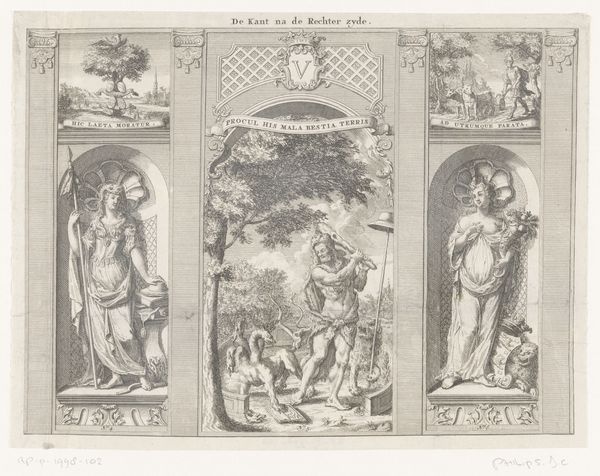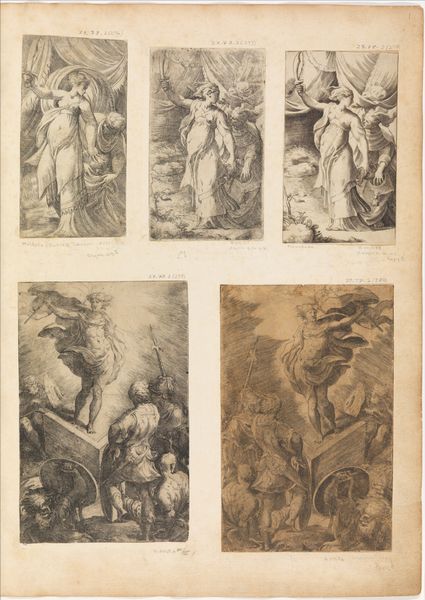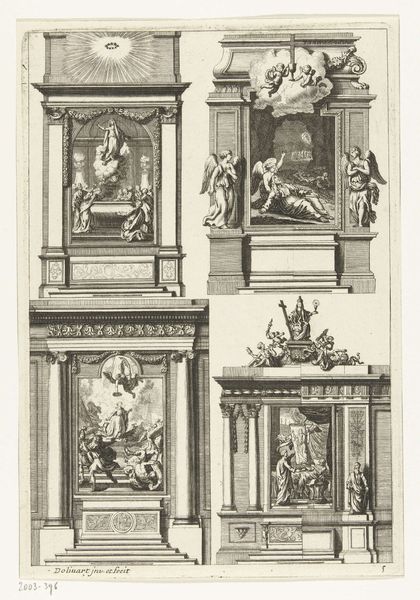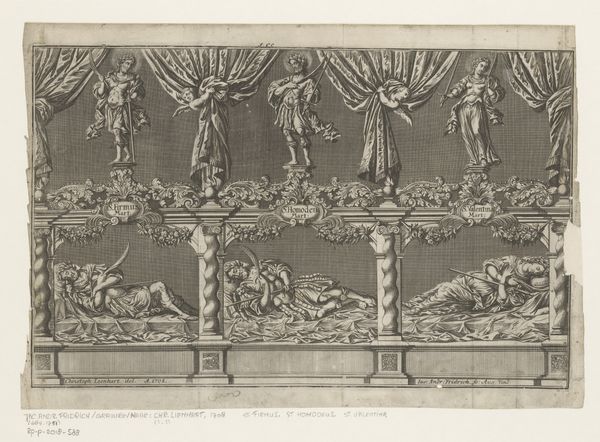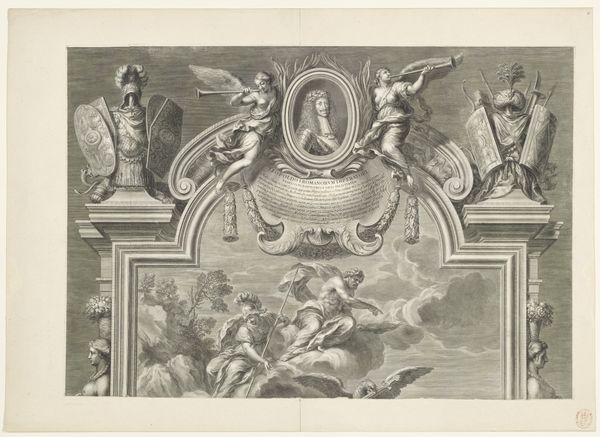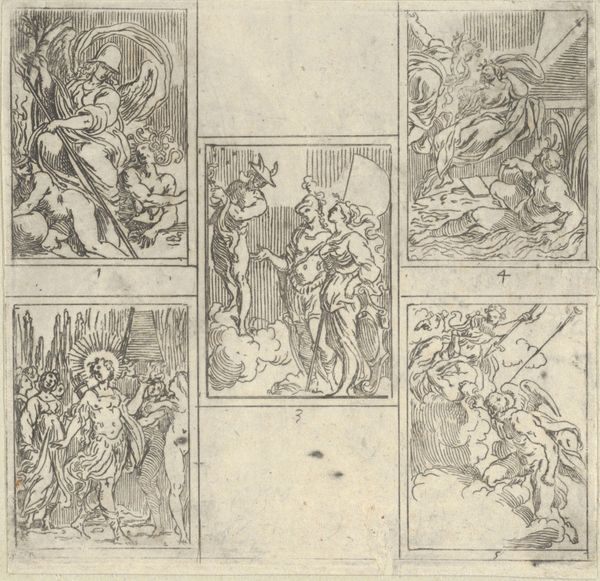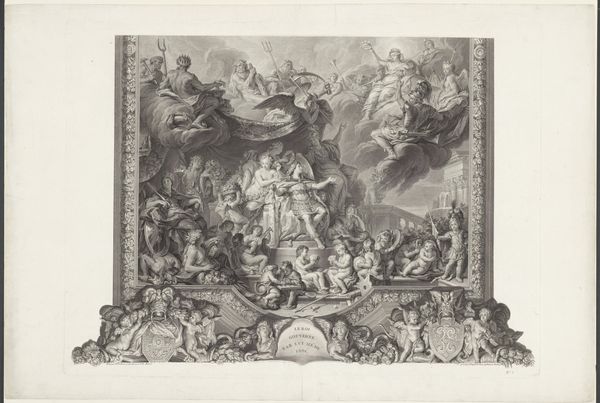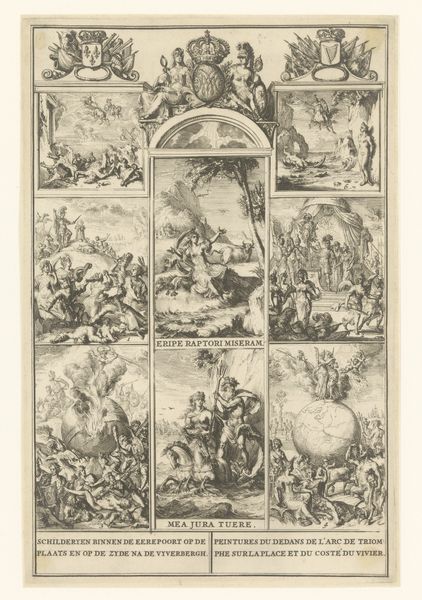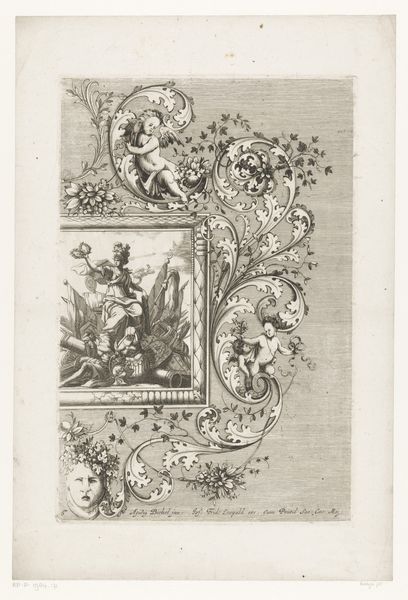
Decoraties bij het huis van de heer D.A. Bisschop te Rotterdam, 1766 1774 - 1776
0:00
0:00
noachvanderiimeer
Rijksmuseum
Dimensions: height 187 mm, width 235 mm
Copyright: Rijks Museum: Open Domain
Editor: This is "Decoraties bij het huis van de heer D.A. Bisschop te Rotterdam, 1766," a print, an engraving to be exact, made between 1774 and 1776 by Noach van der Meer the Younger. It's at the Rijksmuseum. It looks like a series of symbolic panels… I am curious about what they signify, because it strikes me as pretty formal and symbolic. How do you interpret this work? Curator: Well, looking at these panels, I'm immediately struck by the heavy reliance on allegorical figures. Each panel is a carefully constructed symbolic language. We've got lions representing strength, angels perhaps alluding to divine blessing or fame, and classical figures suggesting justice and military might. Don't you see how each evokes a different kind of power and virtue? Editor: Yes, I see what you mean! And they seem related to the Bisschop family, given the title? Curator: Precisely. In the Baroque era, it was common for wealthy families to commission works celebrating their virtues and aspirations. Look closely – what do you notice about the central panel? Editor: It seems to depict a family or some people bringing their grievances to justice, there is a woman seated and an angel at her side and then other people. Is this panel supposed to show Bisschop’s commitment to justice and good governance? Curator: Excellent observation. Given the context and period, such displays were about conveying status and aligning the family with certain ideals: wealth, justice, and maybe a bit of worldly acclaim. It's interesting how personal identity was so intertwined with public image back then. Editor: That’s fascinating! It completely reframes how I saw this piece initially. Thank you! Curator: And for me, this image reinforces how symbols carry the weight of cultural memory. Justice isn’t only abstract but connected to class, family, and governance of society. It makes you question whose version of justice is displayed here, doesn’t it?
Comments
No comments
Be the first to comment and join the conversation on the ultimate creative platform.
